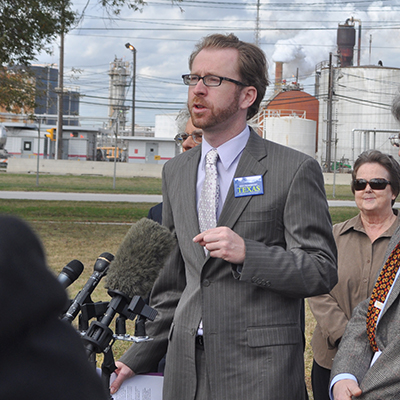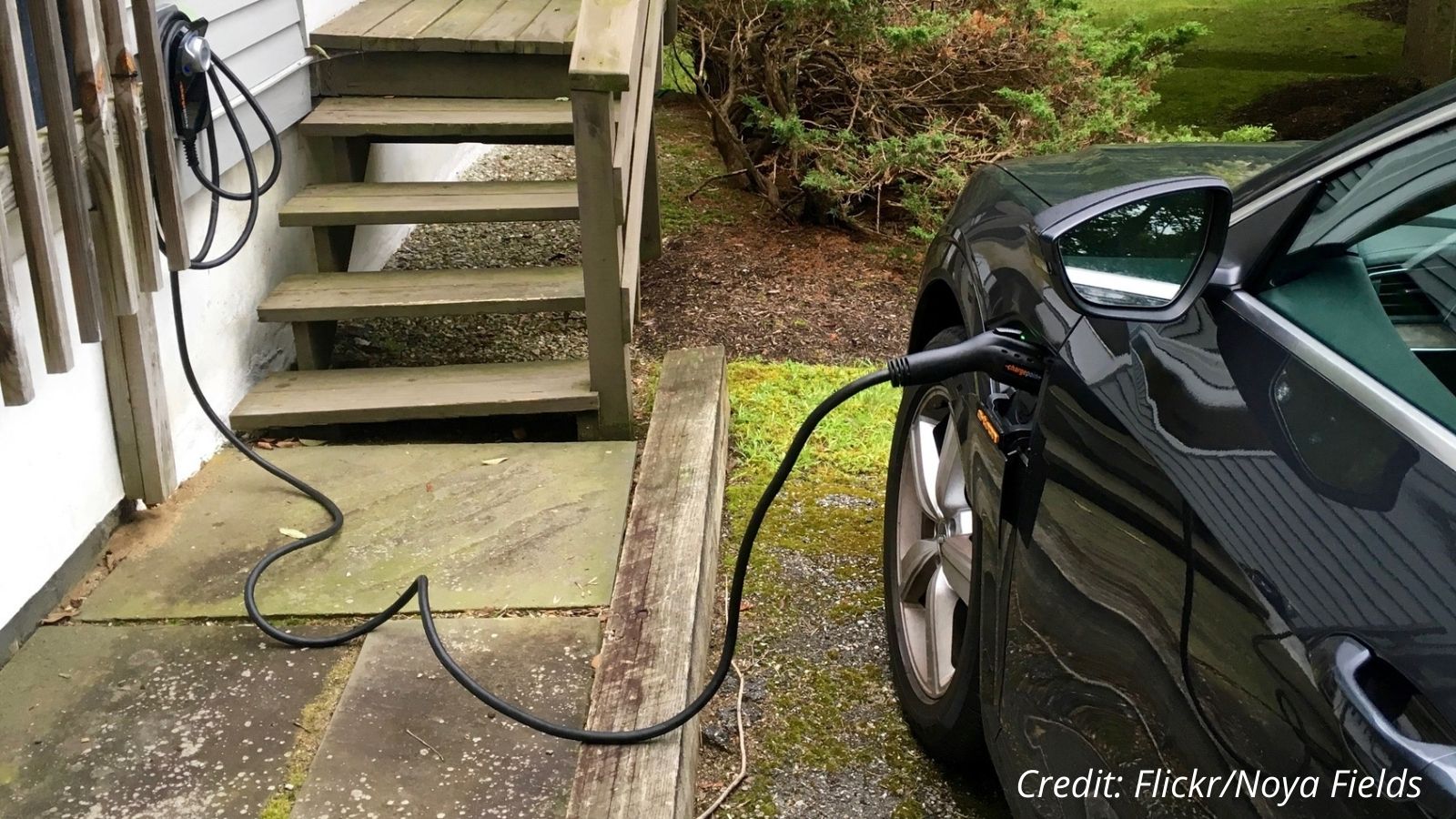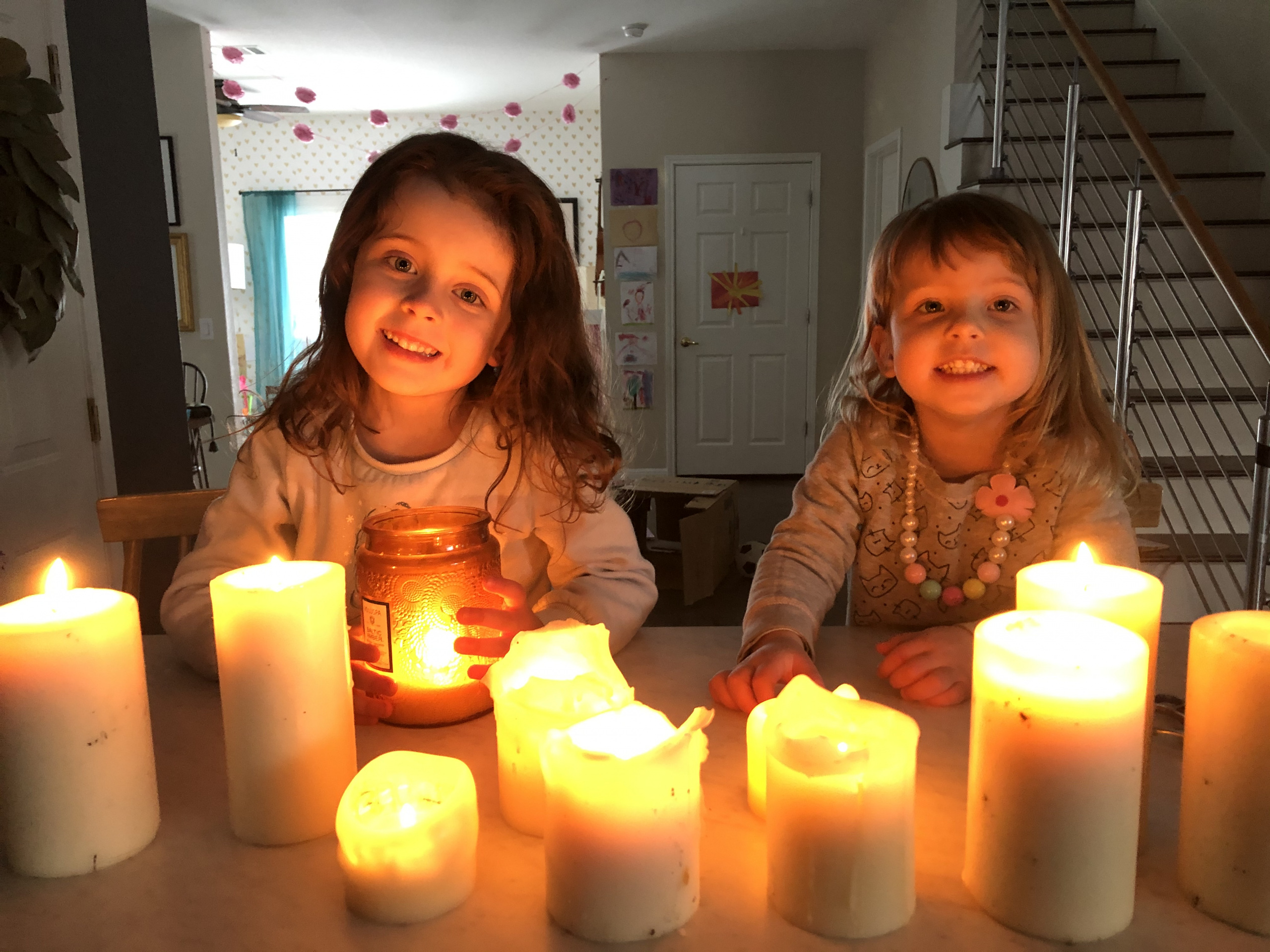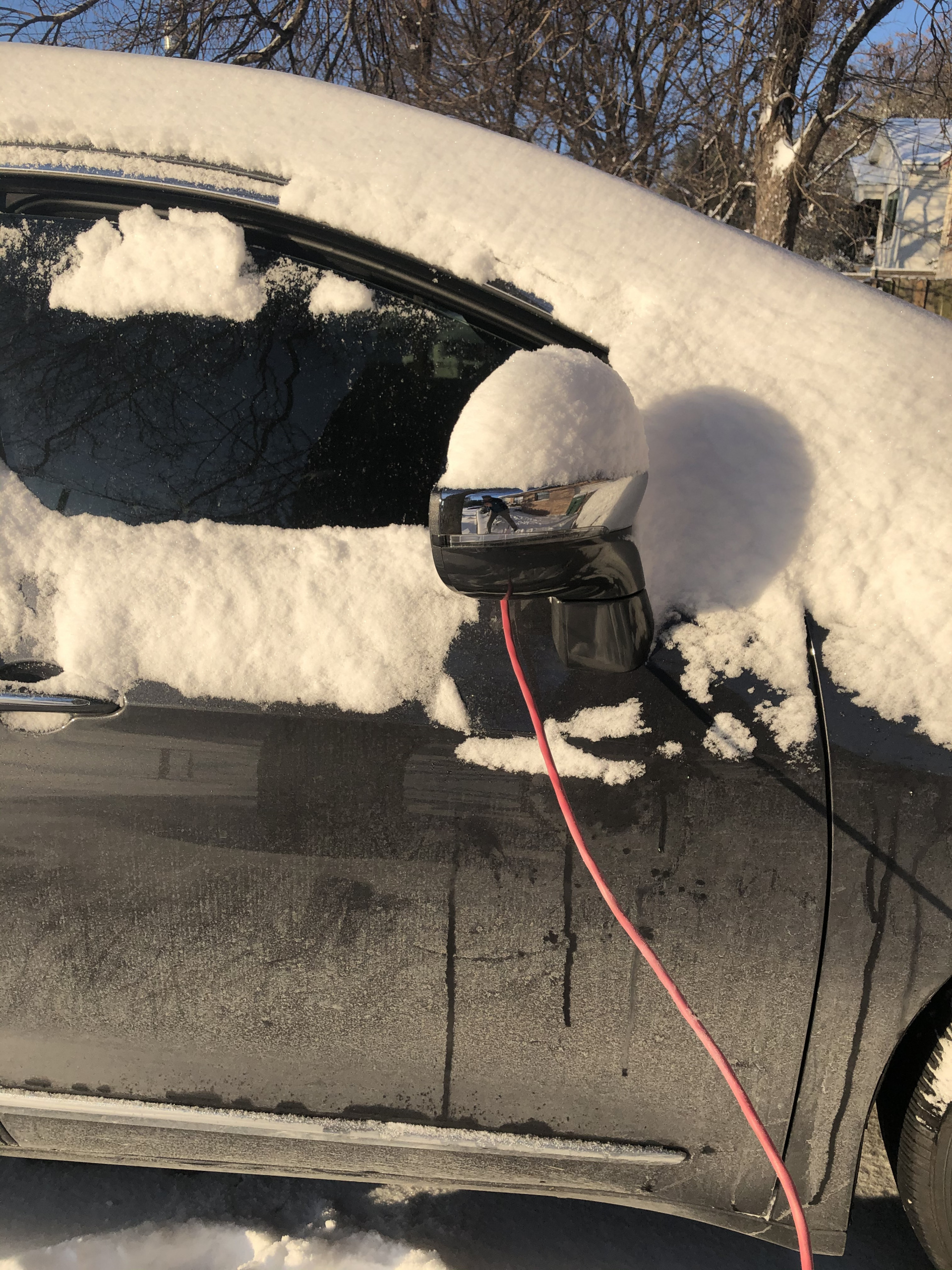
Can I power my house with an electric car?
Vehicle to home technology could help keep the lights on


My daughters got some light, and at least the illusion of heat, from candles during the recent blackout.
My family lost power and heat for three days during the recent winter storm and blackout. It was a pretty lousy experience and we struggled to stay warm as temperatures dropped to single digits outside. We moved all our food from our refrigerator into our cold garage to keep it from spoiling. We also struggled to keep our phones charged so we could communicate with family, figure out when power would come back, and try to keep my young daughters entertained. Our solution was to run an extension cord from our electric car into the house. That kept our devices charged, but could electric cars also power our furnace, refrigerator and more during blackouts?
The answer is not yet, but they could.
Electric vehicles (EVs) are essentially batteries on wheels. You can store energy in those batteries, and if EVs are equipped with something called vehicle-to-grid or vehicle-to-home technology, they can also be used to keep the lights on in emergencies. The technology allows the energy being stored in an EV battery to be pushed back into the grid or into buildings to provide power.
Electric car batteries can hold approximately 60 kilowatt hours (kWh) of energy, enough to provide back-up power to an average U.S. household for two days. Larger electric vehicles like buses and trucks have even bigger batteries and can provide more power. The American company Proterra produces electric buses that can store up to 660 kWh of energy. Electric garbage trucks and even big-rigs, with bigger batteries, are becoming a reality too.
If equipped with vehicle-to-grid (V2G) or vehicle-to-home technology, those cars, buses and trucks could prove invaluable during future blackouts. People could rely on their cars to power their houses. Municipalities, transit agencies and school districts could send out their fleets to the areas most in need. We could power homes, shelters and emergency response centers — and could keep people warm, healthy and comfortable until power could be restored.
In October 2018, the Pecan Street, Inc. started integrating the first V2G vehicle in Texas. The pilot project used a 2019 Nissan Leaf with a 40kWh battery in Austin’s Mueller neighborhood and “during the first year of the demonstration phase, Pecan Street was able to have the vehicle participate as a Behind the Meter (BTM) asset to aid Austin Energy in reducing its peak load during ERCOT’s 4CP events. Additionally, during that first year, Pecan Street did not see major battery degradation from daily charge/discharge events requested by the utility.”
There are hurdles: The technology is still developing, the vast majority of EVs currently on the road do not have this capability, and utilities would need regulatory approval before bringing it to scale. But done right it could be a great opportunity.
Pecan Street CEO Suzanne Russo recommends the “Public Utility Commission put rules into place requiring utilities to have a low-cost, quick-permitting process that allows households to allow for a bidirectional connection with the EV to the grid, which is needed to let them power their home off the vehicle (and also provide power to the grid).” She also suggests studies to quantify the value of V2G capabilities within the ERCOT marketplace and a technical study on how those homes reconnect when the grid comes back on.
According to “back of the envelope calculations” by Smart Charge America’s Joseph Barletta, if Texas had 10 million EVs, we could have mostly met the energy shortages during the blackout. But Texas only has about 35,000 EVs right now, so we need to significantly increase the number of EVs on the road.
There are very encouraging signs that we will start to see a big increase. General Motors is the latest major automaker to announce an intention to move toward producing only electric cars. Several major transit agencies, including in Texas, are starting to switch to all-electric buses.
But we must move faster. If we electrified the nation’s transit and school bus fleets by 2030, for example, we could have more than 500,000 large mobile batteries available across the country.
To support widespread adoption of electric vehicles, we need to invest in the charging infrastructure necessary to accommodate explosive growth. We also need to make sure that as EV adoption increases, the vehicles and infrastructure are set up to use the power-transfer technology. Nissan already does this with its Leaf-to-home system. Proterra offers transit buses equipped with the technology. Dominion Energy in Virginia is working with school bus manufacturers to develop and operationalize a large-scale school bus vehicle-to-grid program.
To standardize the technology and make it accessible to everyone, utilities should seek regulatory approval to implement programs and invest in vehicle-to-grid capable infrastructure, and automakers should make it easy for consumers to install chargers that can send power both ways.
As that happens, governments at all levels should work to incorporate electric vehicles into their emergency response plans. Shelters, hospitals, emergency response centers and other buildings critical to crisis management should be equipped with the infrastructure necessary to pull power from EVs. Heavy-duty fleets like buses and trucks present particularly promising opportunities to provide power to people in need, but all the electric buses in the world won’t do any good if we’re not prepared to have them charged and ready to deploy to the areas that need them the most.
With more EVs on the road and careful planning and preparation, we could have millions of mobile batteries available to help keep the power on in emergencies.

Topics
Authors
Luke Metzger
Executive Director, Environment Texas
As the executive director of Environment Texas, Luke is a leading voice in the state for clean air and water, parks and wildlife, and a livable climate. Luke recently led the successful campaign to get the Texas Legislature and voters to invest $1 billion to buy land for new state parks. He also helped win permanent protection for the Christmas Mountains of Big Bend; helped compel Exxon, Shell and Chevron Phillips to cut air pollution at four Texas refineries and chemical plants; and got the Austin and Houston school districts to install filters on water fountains to protect children from lead in drinking water. The San Antonio Current has called Luke "long one of the most energetic and dedicated defenders of environmental issues in the state." He has been named one of the "Top Lobbyists for Causes" by Capitol Inside, received the President's Award from the Texas Recreation and Parks Society for his work to protect Texas parks. He is a board member of the Clean Air Force of Central Texas and an advisory board member of the Texas Tech University Masters of Public Administration program. Luke, his wife, son and daughters are working to visit every state park in Texas.
Find Out More

Energy-efficient windows and doors: How federal tax credits can help you install them

How to avoid bee-killing pesticides

National web briefing tackles harmful pollution from lawn equipment


